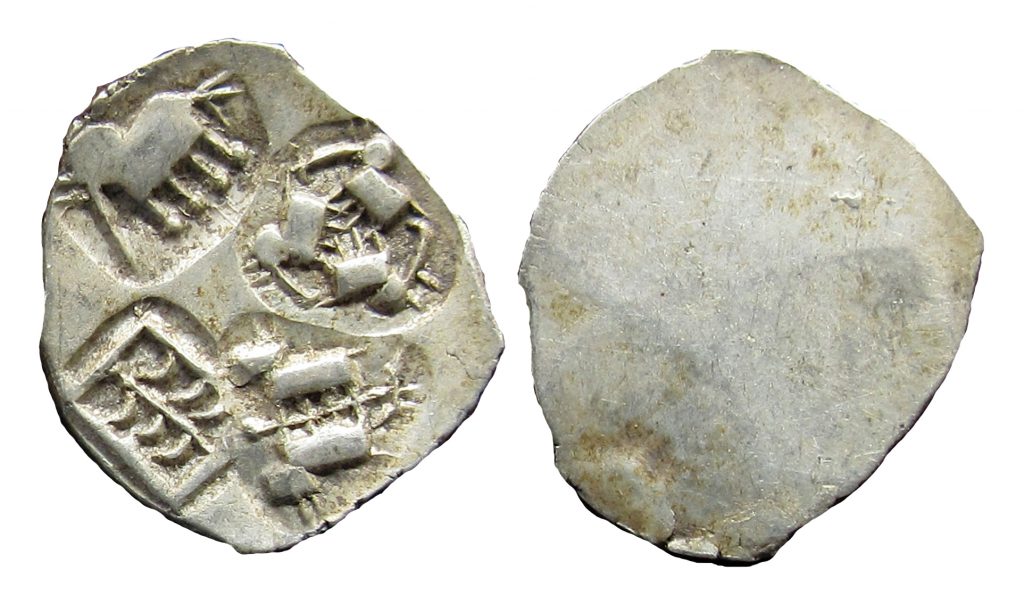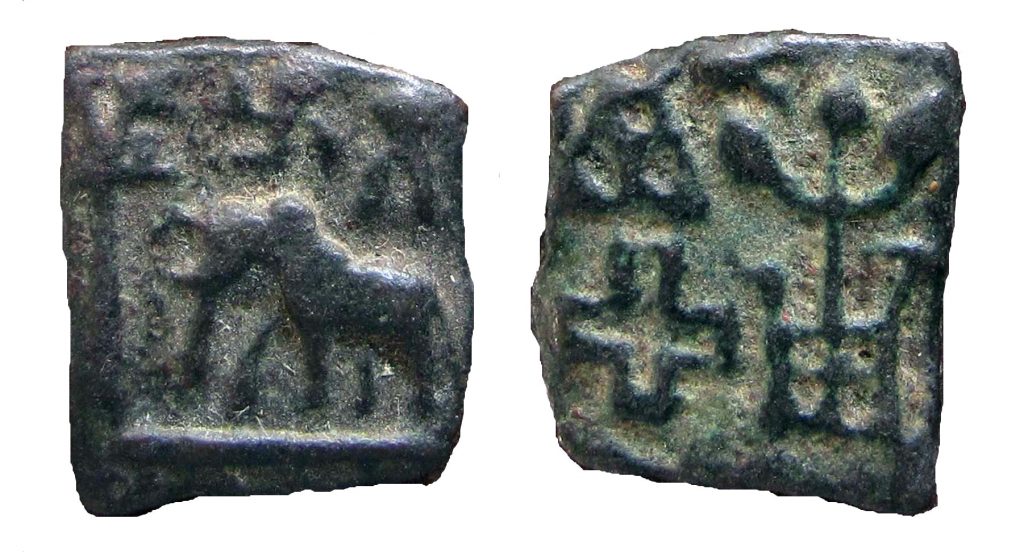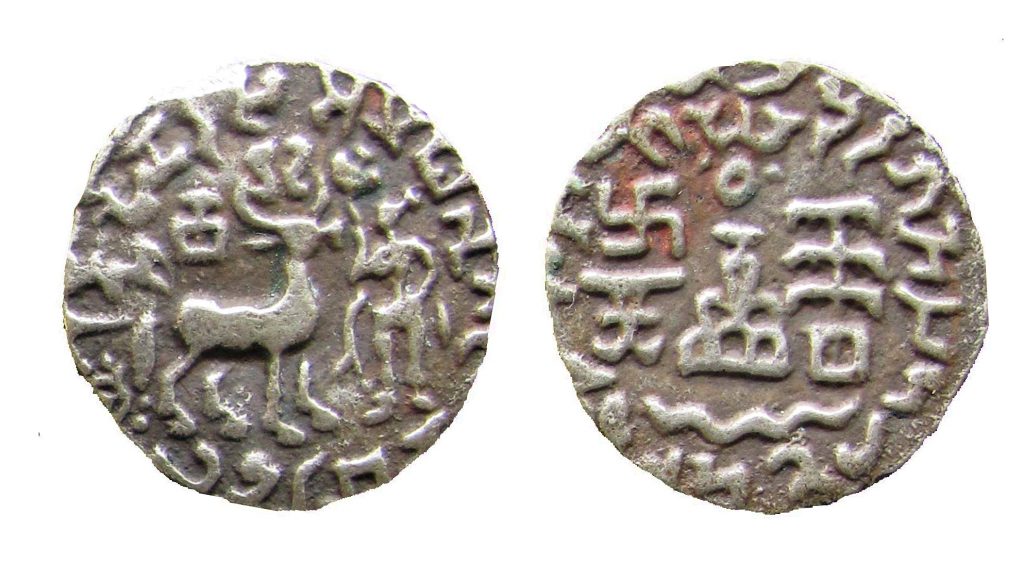In Ancient India, coins were largely minted using three techniques: punch-marking, casting, and die-striking—one of these is still in use today. Read on to find out which one.
Punch-marking
It is the oldest coin-making technique in India, dating back to 6th Century BCE. The term punch-marked was firstly used by James Prinsep, a scholar best known for decoding the Kharosthi and Brahmi scripts. Punch-marked coins are found in both silver and copper—metal pieces are cut into the required shape with a chisel and marks are later made on them using different punches.

Kautilya in his Arthashashtra (c. 4th century BCE) listed objects commonly used in the manufacturing of coins. According to him, the metal used to be first melted in crucibles (musha) and purified with alkalis (kshara). It was then beaten into sheets on an anvil (adhikarni) with a hammer (mushtika), cut into pieces with clippers (sandanisa) and in the end, stamped with punches carrying certain symbols (bimba-tanka). This kind of coin was usually made in round, oval, rectangular or even irregular shapes, depending on the weight. The punching devices bore no inscriptions but had raised symbols in a range of forms, from geometrical to figurative to nature-inspired. In the beginning, only one side of the coins would be punched with symbols, while the other remained blank, but eventually, both sides were similarly marked. It is observed that the symbols made often referenced the guilds or royal authority that issued them. Such punch-marked coins have been observed in the Indian subcontinent throughout history, from the west (Kandahar) to the east (Mahasthan, Bangladesh) and the north (the Himalayas) to the southern Indian peninsula. The Yadavas of Devagiri (c. 14th century AD) distinguished themselves by using this technique in fashioning gold coins.
Casting
Casting was used to make coins of copper and other cheaper metals. The practice, involving the use of molds, began somewhere around the 3rd Century BC.

In this technique, a single model with all the required symbols was prepared. To cast coins, metal used to be poured into molds made using that model.
This type of coin-casting was regular up to the commencing of the Christian era with the Yaudheyas in particular favouring them. The trouble with casting was that the impression of the mold was not always effectively transferred to the coins. It was used solely for molding less expensive metal due to the fact the technique made forging easy. In its favour was the fact that casting as a process was quicker than punch- marking, considering that many coins could be produced at one time from a single mold.
Die-striking
Punch-marking and casting progressively gave way to the die-struck technique. The new technique was initially adopted to tackle the risk of forgery. The flan – the blank disk used to make the coin – was smaller than the die size, making it difficult to forge duplicates. It was, additionally, a faster approach than those that preceded it.This system was first adopted in India by north Indian tribes, who in turn learned it from the Indo-Greeks. Over time, inscriptions joined the symbols on the coins and the technique grew to be very popular with many dynasties.

Initially, die-striking used to be limited to one facet of the coin till the double-die system caught on. The approach can be described as an anvil and punch technique. On a diagram engraved on the anvil, the ‘blank’was placed and driven in and either punched or hammered to take the impression. The anvil-diebore the symbols in intaglio so that they would come out in relief on the coin. In the next stage, a diagram was engraved on the punch and used to type the face of the coin. The type from the anvil used to be known as the obverse and that from the punch, the reverse. The dies had been at first square or rectangular in shape, however, later coins were made round and the dies changed accordingly.
Die-striking is distinct from punching in many ways. In punching, symbols are separately incused or stamped on the blank; in die-striking, a group of symbols or a broad sketch is stamped by a single die. The die-struck technique is still used today, although it is now not done by hand but managed mechanically.
Repousse In French, the word ‘repousse’ means ‘pushed up’. This technique entails ‘shaping’ or ornamenting coins with patterns in relief by way of hammering or pressing on the reverse side. The Sharabhapuriya dynasty of Mahakosala (5th – 6th c. CE) of the modern Chhattisgarh region were early adopters of this technique, using it to issue gold coins.